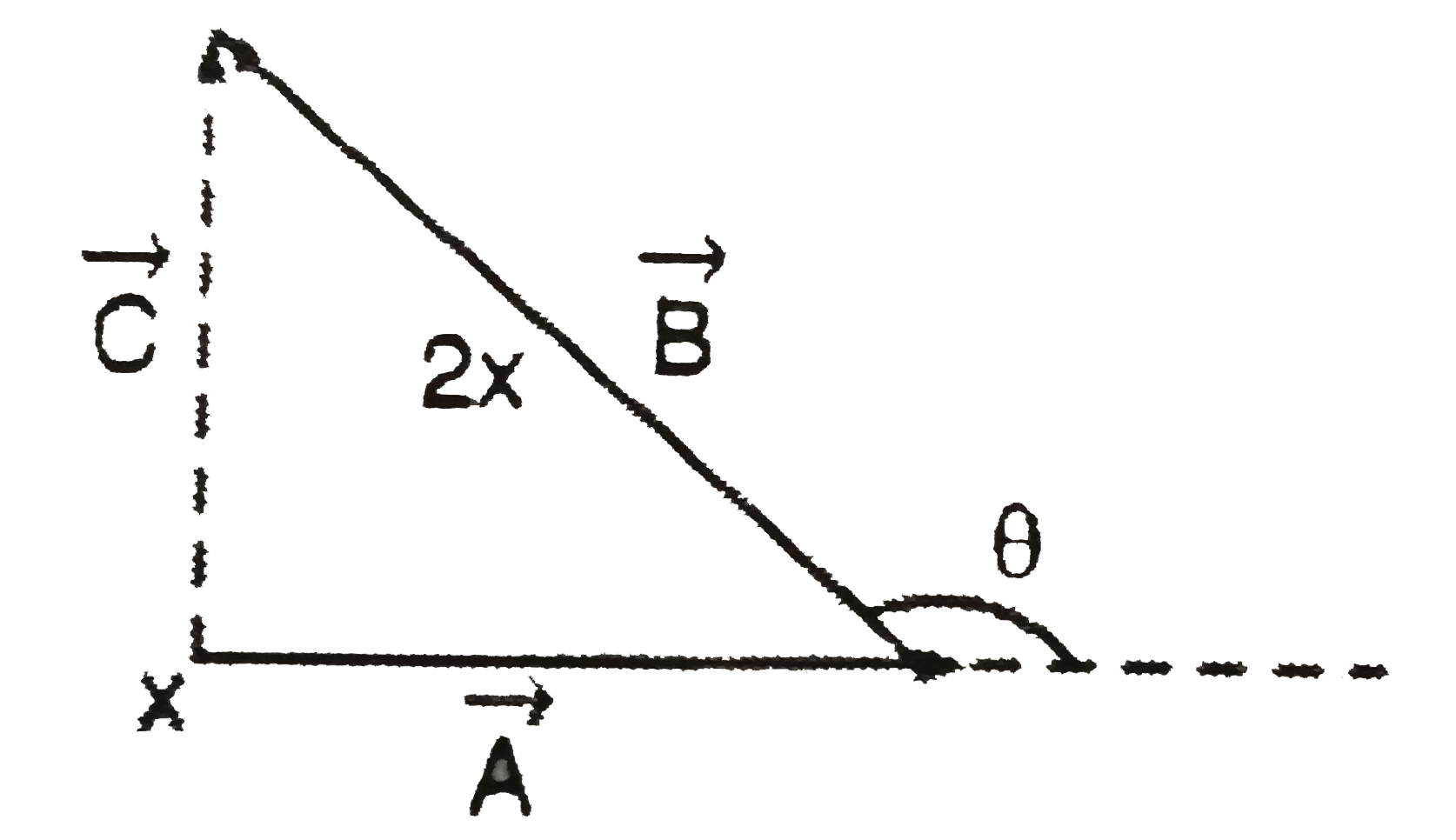The resultant of two forces , one double the other in magnitude is perpendicular to the smaller of the two forces. The angle between the two forces is ________?
A
120∘
B
60∘
C
90∘
D
150∘
Video Solution
Text Solution
The correct Answer is:D

Cosθ=−ab=−12
θ=120∘
|
Topper's Solved these Questions
- VECTORSBook:GRB PUBLICATIONChapter:VECTORSExercise:MORE THAN ONE CHOICE IS CORRECT
Explore 15 Videos
- VECTORSBook:GRB PUBLICATIONChapter:VECTORSExercise:ASSERTION- REASON
Explore 1 Video
- VECTORSBook:GRB PUBLICATIONChapter:VECTORSExercise:PROBLEMS FOR PARCTICE
Explore 23 Videos
- UNITS AND DIMENSIONSBook:GRB PUBLICATIONChapter:UNITS AND DIMENSIONSExercise:Link Compression
Explore 6 Videos
Similar Questions
Knowledge Check
Two forces, with equal magnitude F, act on a body and the magnitude of the resultant force is F3. The angle between the two forces is:
Acos−1(−1718)Bcos−1(−13)Ccos−1(23)Dcos−1(89)Two forces with equal magnitudes F act on a body and the magnitude of the resultant force is F /3. The angle between the two forces is
Acos−1(−1718)Bcos−1(−13)Ccos−1(23)Dcos−1(89)If the resultant of two forces of magnitudes p and 2p is perpendicular to p, then the angle between the forces is
A2π3B3π4C4π5D5π6
If the resultant of two forces is of magnitude P and equal to one of them and perpendicular to it, then the other force is
View SolutionThe resultant of two forces acting an anlge of 120∘ is 10 kg wt and is perpendicular to one of the forces. That force is
View SolutionSquare of the resultant of two forces of equal magnitude is equal to three times the product of their magnitude. The angle between them is
View SolutionSquare of the resultant of two forces of equal magnitude is equal to three times the product of their magnitude. The angle between them is
View SolutionTwo forces with equal magnitudes F act on a body and the magnitude of the resultant force is F /3. The angle between the two forces is
View Solution


